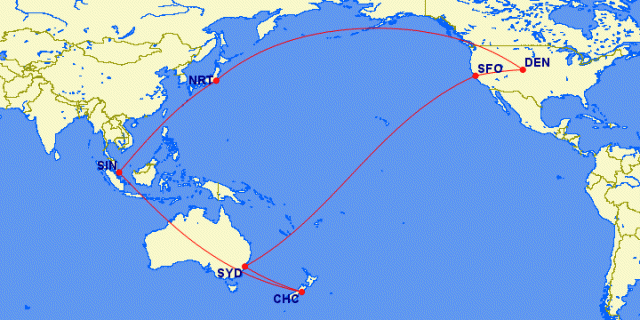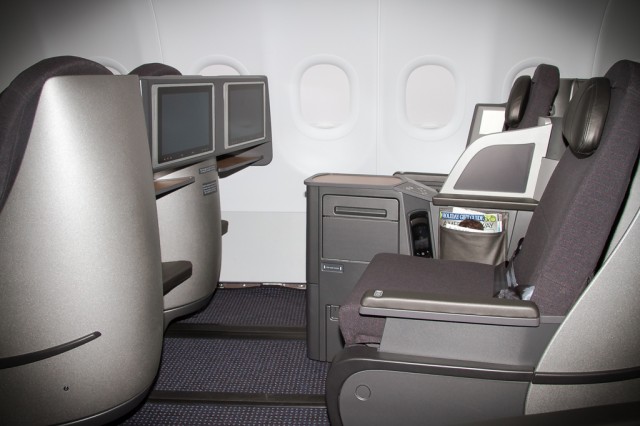
Business Class on the American A321 – Photo: SouthpawCapture
I live in the Dallas area, and don’t often fly transcon flights. However, I recently needed to go to both LA and New York close to the same time, and I thought it would be fun to try American’s new Airbus A321’T’ they are flying between JFK and both LAX and San Francisco.
I am an Executive Platinum AAdvantage member (American’s top-tier elite for the unitiated) so I can often, but not always, upgrade on a regular coach fare. I looked for the flight with the most available seats in business class, reasonably figuring that this would give me the best chance of upgrading. It was a midweek flight leaving LAX at 1 PM, arriving at JFK at around 10 PM local time.
If it’s not obvious, I am a typical top-tier elite member – very spoiled. Sitting in the back of the bus is for the great unwashed, not I. Seriously, no, I am not above sitting back there, and as I make lots of last-minute changes, I often wind up squashed in with everybody else. Plus since I own my business, travel costs come out of my pocket. No high-end business class fares for me.
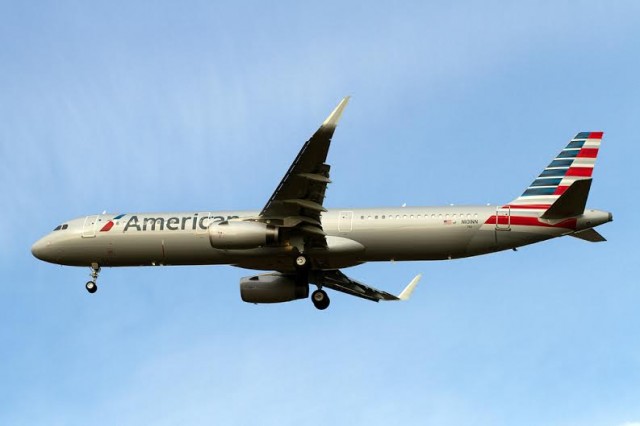
American’s A321 in flight – Photo: SouthpawCapture
So when you have the opportunity to take ’œAAdvantage’ of the few perks you get with business travel these days, you grab it. Considering this was a five-hour flight and I was already very tired, I was REALLY hoping for the upgrade, to say the least.
When I got to LAX, the upgrade still wasn’t there, and I was pouting. To make things worse, the flight was listed an hour late due to weather in JFK. But about 45 minutes before the flight left the gate, the clouds parted, the sun shone, and the upgrade gods smiled on me. Business class it was, Seat 8F on the new A321.
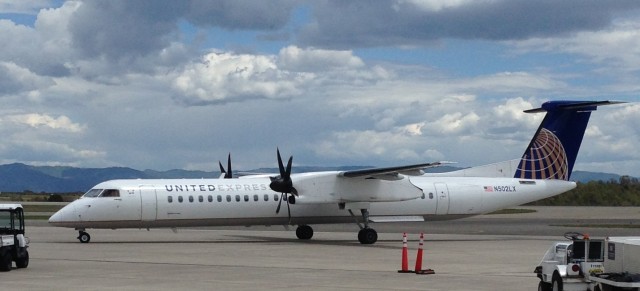
United Bombardier Dash 8 Q400 at Durango – Photo: Blaine Nickeson | AirlineReporter
As a Silver Premier member with United Airlines (their lowest-level elite tier), getting a complementary first class upgrade happens almost as rarely as spotting a unicorn. In a year and a half of being an elite, I’ve gotten two first class upgrades. Recently, upgrade number two came in an unlikely form; on a Bombardier Dash 8 Q400.
That’s right, folks – United is offering a first class cabin on planes with propellers. I caught my upgrade on a quick business trip from Denver (DEN) to Durango (DRO), Colorado.
All of United’s Q400s are actually operated by Republic Airlines, one of many regional carriers for UA. They are configured with 71 seats; seven in first class, 10 in Economy Plus, and 54 in economy. As to be expected on a regional plane, “first class” really only meant a wider seat, more legroom, and a free beer. Well, we got some pretzels too.
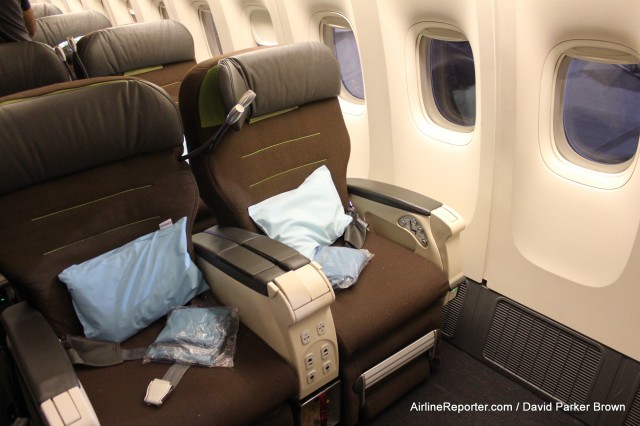
My Comfort Class seat on my Turkish Airlines Boeing 777-300ER out of LAX
Introduction
When I first saw I was booked in Comfort Class on Turkish Airlines, I wasn’t sure what to expect. I knew it was a premium economy product, but that could mean anything from a few inches of extra leg room to having an almost-business-class experience.
Being able to check out the product during my recent flights to and from Los Angeles to Istanbul, I was impressed overall by my whole experience. I enjoyed the comfortable seat, my amenities, the delicious food, and the access to the in-flight entertainment (IFE) system. However, I felt let down by the service that I received during certain points of my trip, which left me wanting a bit more.
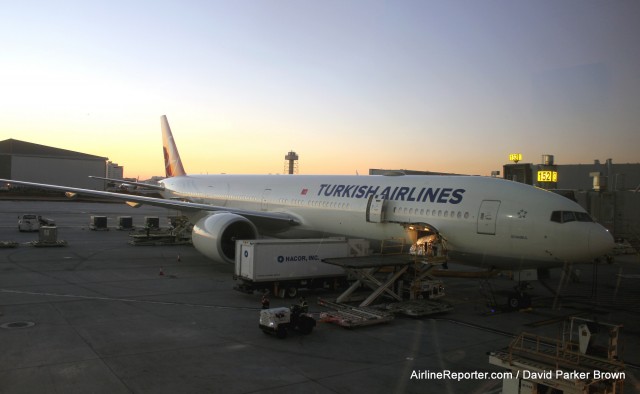
Turkish Airlines’ Boeing 777-300ER sitting at Istanbul
It was nothing that horrible, but just added up enough to make me disappointed overall about the experience. I think some of the things could easily be avoided or changed to make the passenger experience a bit better, and make people who feel like they shelled out some additional money for a premium product feel a bit more special.
One of the main reasons that I was flown to Istanbul was to work with Turkish to help them look into the future of their business – and part of that was related to customer service. I am grateful to work with an airline wanting to learn, and I hope that they are listening.
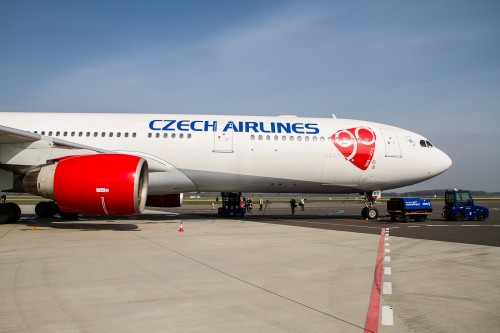
OK-YBA basking in the spring sun after arrival in Ostrava – Photo: Jacob Pfleger | AirlineReporter
Czech Airlines (CSA) has one Airbus A330 (with a special interior) and it wanted to show it off. At the end of February, the airline announced a series of three promotional flights on-board their A330-300. The idea of these flights was to showcase the aircraft in Ostrava and Bratislava, which are both key destinations in the Czech Airlines network and provide a substantial amount of connecting traffic for the A330 Seoul service.
The flights were scheduled to take place on the 1st of April. Obviously, the date in question made many think it was a joke, but true to their word the flights did take place as planned. I was fortunate enough to experience all three flights, as well as a media event in Ostrava showcasing the aircraft and network to numerous travel agents and key figures in the region. The routing of the flights was Prague (PRG) – Ostrava (OSR) – Bratislava (BTS) -Prague. All in, the flight time was less than two hours.
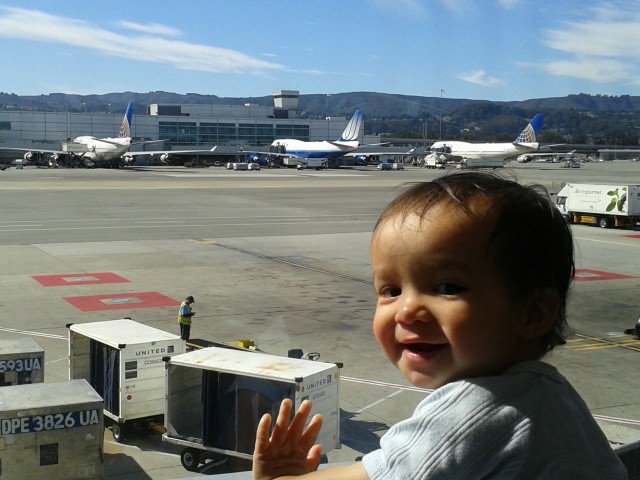
Start ’em early! Author’s son planespotting at SFO. Photo: David Delagarza
’œThat’s insane.’ That seemed to be the reaction most people, many of whom were seasoned fliers, had to our plan. My wife and I had schemed it up over a year ago while she was pregnant with our first child. We had always enjoyed traveling, and I had gotten into collecting miles and points when we found out that we would be adding a baby to the mix. We didn’t want to stop traveling once the baby was born, so we booked one of the most ambitious itineraries we could think of – flying to New Zealand, with stopovers in Japan and Australia. And, yes, we would be taking the baby with us.
11 months prior to the trip, we had the miles saved up. We had accumulated enough to book the trip in business class (at least prior to the recent United Airlines MileagePlus devaluation.) After diligently researching and waiting for availability to open up, I finally found a business class route that would work – at least until I saw the infant fare. United charges 10% of the cabin fare for lap infants on international flights. For economy cabins, this can add up to a couple hundred dollars. However, for the premium cabins, we were looking at paying nearly $1,000 each way. Although I did briefly consider footing that bill, we decided to go in economy and use the extra miles to put our son in his own seat (when we could find the award space) and stay in some nicer hotels along the way.
Our outbound itinerary ended up beginning with Denver to Tokyo Narita on United’s 787 Dreamliner. We had a 20-hour overnight stopover before continuing onto Singapore aboard Singapore Airlines’ A380. The final leg took us from Singapore to Christchurch, New Zealand on Singapore’s 777-220ER. 50 hours, four countries, and 14,000 miles just to get there.
Our return trip was a bit easier – Christchurch to Sydney on an Air New Zealand A320, followed by a 23-hour stopover in Sydney before continuing onto San Francisco on a United 747-400, connecting to Denver on a United A319. The only hitch was that I was unable to find any kind of routing that made sense for the return trip once my son was born, so he was going to fly home as a lap infant. It was sure to be quite the adventure.







